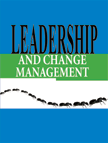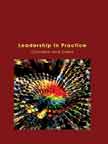WaterHealth International: Providing Safe Drinking Water to the Bottom of the Pyramid Consumers




|
|
ICMR HOME | Case Studies Collection
To download WaterHealth International: Providing Safe Drinking Water to the Bottom of the Pyramid Consumers case study
(Case Code: LDEN069) click on the button below, and select the case from the list of
available cases:

»
Leadership and Entrepreneurship Case Studies
» Short Case Studies
» View Detailed Pricing Info
» How To Order This Case
» Business Case Studies
» Case Studies by Area
» Case Studies by Industry
» Case Studies by Company
Please note:
This case study was compiled from published sources, and is intended to be used as a basis for class discussion. It is not intended to illustrate either effective or ineffective handling of a management situation. Nor is it a primary information source.
|
This case won the third prize in the oikos Global Case Writing Competition 2010 (Social Entrepreneurship Track), organized by the oikos Foundation for Economy and Ecology, University of St. Gallen, Switzerland. |
Case Details:
|
Price: |
| Case Code |
: |
LDEN069 |
For delivery in electronic format: Rs.
500;
For delivery through courier (within India): Rs. 500 + Rs. 25 for Shipping & Handling ChargesThemes
Social Entrepreneurship / Corporate Social Responsibility |
| Case Length |
: |
26 Pages |
| Period |
: |
1992-2009 |
| Pub Date |
: |
2010 |
| Teaching Note |
: |
Available |
| Organization |
: |
WaterHealth International Inc. |
| Industry |
: |
Safe Water |
| Countries |
: |
India; Africa; Global |
Abstract:
|
This case study is about Irvine, California-based WaterHealth International Inc. (WHI), a social purpose for-profit venture in the safe water sector, focused on serving the traditionally underserved ‘Bottom of the Pyramid' (BoP) segment. The company's aim was to ensure increasing returns for the company and its investors while achieving a social impact. Developing countries face a water crisis with more than 2 billion people lacking access to potable water and often having to rely on contaminated water resources. This has led to children suffering from diminutive growth due to water-borne diseases. In addition to deaths and economic loss, women and girls, on whom the burden of obtaining water falls, have to trek long distances and spend hours of their time fetching water
- time that could be better spent with the family or on economic activities.
|
|
Distressed by the suffering caused by water-borne diseases and the associated economic loss, Ashok Gadgil (Gadgil), an Indian born physicist at Lawrence Berkeley National Laboratory, sought to find a solution to the problem. And he came up with the innovative and breakthrough UV Waterworks (UVW) technology. The UVW technology disinfected water from harmful pathogens and microbes with the help of ultraviolet light. The result was safe and clean drinking water that exceeded the World Health Organization's (WHO) water standards and was sold to BoP consumers. In 1996, Gadgil licensed the UVW technology to WHI, set up by Ghana-born entrepreneur and Johnson & Johnson veteran Tralance Addy (Addy).
As the CEO of WHI, Addy played a crucial role in refining the business model. WHI helped arrange loans for communities to finance the installations of its water systems and the beneficiaries had to pay a nominal user fee to avail of the service. The company also offered a franchise model to entrepreneurs where they received a return on investment within 12 to 18 months. The proceeds were enough to cover the expense of the UVW system, cost of installations, and maintenance of the equipment. WHI was successful in attracting commercial financing for setting up its water systems.
As of mid-2009, more than 600 WaterHealthCenters (WHCs) had been installed in many countries including India, the Philippines, and Ghana, providing safe water to more than one million people around the world. WHI's aim was to take the UVW technology and its water system to needy communities throughout the world by establishing a global presence. While experts appreciated WHI's efforts to provide potable supply of water to underprivileged communities in developing countries and felt the business model was sustainable, they pointed out that certain aspects of its water systems and business model needed to be changed to make it more relevant to the target segment. Obtaining the capital to help more communities finance these water systems, so as to ultimately achieve significant scale relative to the magnitude of the problem, was another challenge.
Issues:
» Understand the issues and challenges in starting a social enterprise and managing growth.
» Understand and explore ways in which a social entrepreneur can build a sustainable business in developing and emerging markets
- especially with respect to serving the BoP population - while addressing some of the most pressing issues confronting the global community.
» Study WaterHealth International's business model compare and contrast it with other existing models being employed in the safe water sector, and explore ways in which it can be made more effective and sustainable.
» Study the challenges faced by WHI and explore ways in which the venture can be scaled up further.
Contents:
Keywords:
Entrepreneurship, Social entrepreneurship, Bottom of the pyramid, Business model, Revenue model, Operations, Social marketing, Safe water, Water purification systems, Community Water Systems, Ashok Gadgil, Tralance Addy, WaterHealth International
WaterHealth International: Providing Safe Drinking Water to the Bottom of the
Pyramid Consumers
- Next Page>>

|
|



